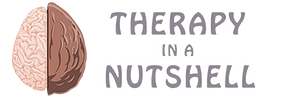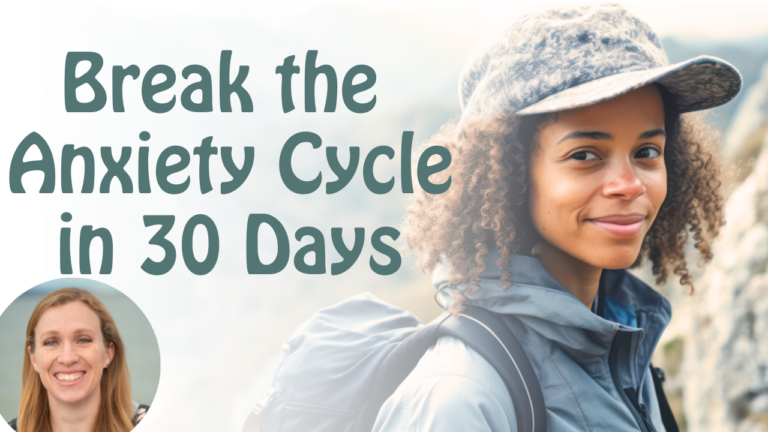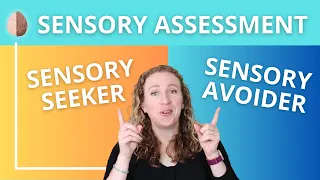There are physical conditions that cause anxiety. But it can be hard to distinguish between physical conditions that have symptoms of anxiety, and psychological conditions that have symptoms of anxiety.
It’s best practice to get evaluated by an educated doctor on what conditions to rule out before engaging in lengthy psychotherapy.
There Are Physical Conditions That Cause Anxiety
During the Napoleonic wars, doctors started to describe a disease that caused men to “go mad” to hallucinate, to lose their ability to speak. They might develop depression, anxiety, psychosis, or mood swings. Symptoms may include cognitive impairment, personality changes, psychiatric disorders, visual and auditory abnormalities. By all appearances, this could have been described as a mental illness, but it wasn’t a disorder of the “mind”, but rather a physical illness of the brain- it was caused by untreated syphilis. And, when antibiotics were developed, it became completely treatable.
At a conference on the interaction of nutrition and mental health, the presenter shared a case example of a woman in her 50’s who developed OCD for the first time in her life. She was very distressed and began therapy but saw minimal improvement for her symptoms. Working carefully with her doctor, she learned that after she had started taking calcium supplements, the calcium had depleted the magnesium in her body, when she normalized those levels her anxiety and OCD symptoms greatly decreased.
Sometimes anxiety is not “All in your head” there’s a dramatic interplay between your body and mind. Sometimes a physical, medical issue like a vitamin deficiency, an illness, or an undiagnosed sleep issue shows up looking exactly like the symptoms of a psychological anxiety disorder. And sometimes the best way to treat anxiety is to actually treat the underlying physical issues first. Or at least rule them out.
Because most people, doctors included, often focus their treatments on just therapy or just medication- I think it’s important to be aware of other conditions to treat.
So in this video we’re going to talk about ten physical conditions that mimic Anxiety. And then, sometimes anxiety, even extreme anxiety, isn’t disordered. Someone can show up to a therapist’s office or a doctor or the ER with clear symptoms of anxiety, and it’s not going to be helpful to treat the anxiety first, because the issue is really something else altogether- so let’s talk about that.
Embracing The Mind-Body Connection
OK, there’s this long-standing idea in the West that the mind and body are two completely separate things, that you can overcome the body with the mind, and that you can make a clear distinction between the two. That physical issues have nothing to do with how we think, and that thinking issues have no impact on our physical health.
This idea is called the Cartesian split, and it is wrong.
We are inherently both physical and spiritual beings. And our thoughts, feelings, and emotions are rooted in our physical cells. Our emotions activate our nervous system, our cardiovascular system, our hormones, our chemistry.
When you think of something awful happening- it causes changes in your body and brain. If, for example, you imagine yourself being harmed, embarrassed, or humiliated, your threat response system turns on. Cortisol and adrenaline flood through the body, triggering changes in blood pressure, breathing, heart rate, inflammation, blood sugar, muscle tension, and sweating.
But the mind-body connection goes in both directions- your mind can make your body stressed, but your body’s state can cause psychological changes. Your Brain constantly scans your body for signs of a threat, even an internal threat. When your body is in pain, or if your breathing is tight and your muscles are tense, this can trigger the stress response and lead to an endless feedback loop that looks and feels like anxiety. And when you do have a physical illness, that’s stressful on its own, it can undermine your resilience or contribute to anxiety symptoms.
And speaking of tight muscles, let’s just take a slow breath and stretch for a second.
Physical Conditions That Look And Feel Like Anxiety
- Nutrient deficiencies– Low Magnesium, zinc and iron, B Vitamins, B6, B9, B1 and B12 are associated with mood swings, irritability and anxiety. Use of acid reflux medicine or other medications can interfere with absorption of some nutrients. Some people don’t metabolize certain nutrients well and a lack of nutrients can make it hard for your brain to have the building blocks it needs for neurotransmitters. For example, a lack of vitamin D is closely associated with depression. The research is still unclear on how these nutrients impact mental health and which type of supplementation works for whom. But it may be beneficial to talk with your doctor about testing for nutrient deficiencies. And just a reminder, supplements aren’t a replacement for medication.
- Sleep disorders – I once worked with a young man in therapy who was having constant nightmares of being suffocated, this was causing significant anxiety. After carefully assessing his situation I sent him to a sleep professional who found that he actually had very severe sleep apnea, and when that was treated the anxiety and nightmares went away. Sleep is essential for your brain to function well, during sleep memories are processed, toxins are flushed out, and your brain and body have time to heal and repair. Adults need on average 7-9 hours of sleep and poor sleep is closely associated with anxiety disorders. Common problems include sleep deprivation, insomnia, and sleep apnea. But less obvious problems like sleep phase disorders, restless leg syndrome, and parasomnias can also impact mood. When sleep problems are affecting mental health, they’re best treated with light therapy, CBT for Insomnia, lifestyle changes and treatments from a sleep professional.
- Heart and Breathing difficulties– When it’s difficult to breathe, that can mimic the symptoms of rapid breathing that come with anxiety- this can trigger a feedback loop where your body basically tells your brain to be anxious. So you may want to look out for and treat COPD, Asthma, or other breathing issues. Heart differences-heart palpitations, arrhythmia, POTS, etc. High blood pressure is closely correlated with anxiety.
- Blood sugar issues- like hypoglycemia and diabetes can trigger a spike in anxiety as can…
- Chronic Inflammation– The stress response is essentially an inflammatory response, cortisol sends a message to your cells to prepare for action. Inflammatory diseases like arthritis and allergies increase your chances of developing an anxiety disorder. Hayfever for example increases your risk by 65%. And Rheumatoid arthritis frequently co-ocurrs with anxiety. Around 20-40% of individuals with RA may have comorbid anxiety disorders.
- Hormonal issues – Low or high thyroid, hyperadrenocorticism, and other hormonal issues can directly impact anxiety symptoms. These are best treated by an endocrinologist.
- Female issues– PMS, birth control, perimenopause, menopause, pregnancy or fertility treatment can all impact anxiety. 35% of pregnant women experience high anxiety and 20% of women experience heightened anxiety after giving birth. And again this could be due to changes in hormones, blood pressure, blood sugar, or even the physical pressure on the lungs or heart.
- If anxiety comes on suddenly without reason, you may want to work with a doctor to rule out things like TBIs or other neurological conditions like encephalitis, PANDAS, A side effect from a medication (including steroids), Lyme disease, or other disorders.
- Substance Use and Abuse- Chronic Cannabis use actually increases sensitivity to stress by decreasing natural endocannabinoids, Caffeine use suppresses calming chemicals and increases norepinephrine which triggers agitation that can feel like anxiety. Alcohol sedates but then irritates, GABA(a calming neurotransmitter) is stimulated and Glutamate is reduced, but as the alcohol wears off, that is reversed and many people experience increased anxiety. Alcohol also interferes with sleep. Nicotine initially calms but then the withdrawal symptoms are stimulating and agitating. For people with anxiety, reducing these substances can help dramatically.
- Undiagnosed ADHD, Autism or PTSD – sometimes the symptoms of anxiety are better explained by a different mental health diagnosis. For example, the sensory differences of someone with autism may look like anxiety.
Many of these conditions are bi-directional, for example anxiety impacts breathing and breathing impacts anxiety. And the stress of having an illness can contribute to anxiety. When you’re healthy it makes you more resilient to stress, when you’re stressed it makes you more susceptible to illness.
It’s also really important to remember that sometimes things that feel like a physical condition are actually anxiety– panic attacks feel like heart attacks. And Health anxiety (aka hypochondria) makes you think that there’s something physically wrong with you, when in reality the best treatment for that is a psychological treatment for anxiety.
And lastly- sometimes symptoms of anxiety are best treated not from a psychological or medical approach– but from an environmental approach. We’re going to talk a lot about this in the last section of this course, but let me give you an example. I got an email from a subscriber who told me that she had been diagnosed with generalized anxiety, panic disorders, depression, and borderline personality disorder. But eventually she was able to leave her abusive, violent, and unpredictable husband. After she did, the anxiety and hopelessness went away, as did the other symptoms. In her situation, she didn’t need psychological treatment, she needed support- financial and housing support to be able to change her situation. Sometimes it’s your lifestyle that needs to change- you’re working too much, you’re taking on too many responsibilities, you’re staying in a toxic environment. The best treatment for these is to change your boundaries.
The Bottom Line
We can’t rule out or fix every physical issue, but we can at least address some of them. Take small steps to improve your physical health. Get a check up, treat underlying medical conditions when possible. Physical changes can directly improve your anxiety levels.
For example, a healthy diet and exercise is really effective at reducing stress and anxiety. If you want to learn more about practical strategies to improve your mind-body health, check out my course, Change Your Brain, which can help you implement tiny, atomic habits to improve your mental health.
Now if you want to learn more about anxiety, click the link below to access the course, Break the Anxiety Cycle in 30 Days.





